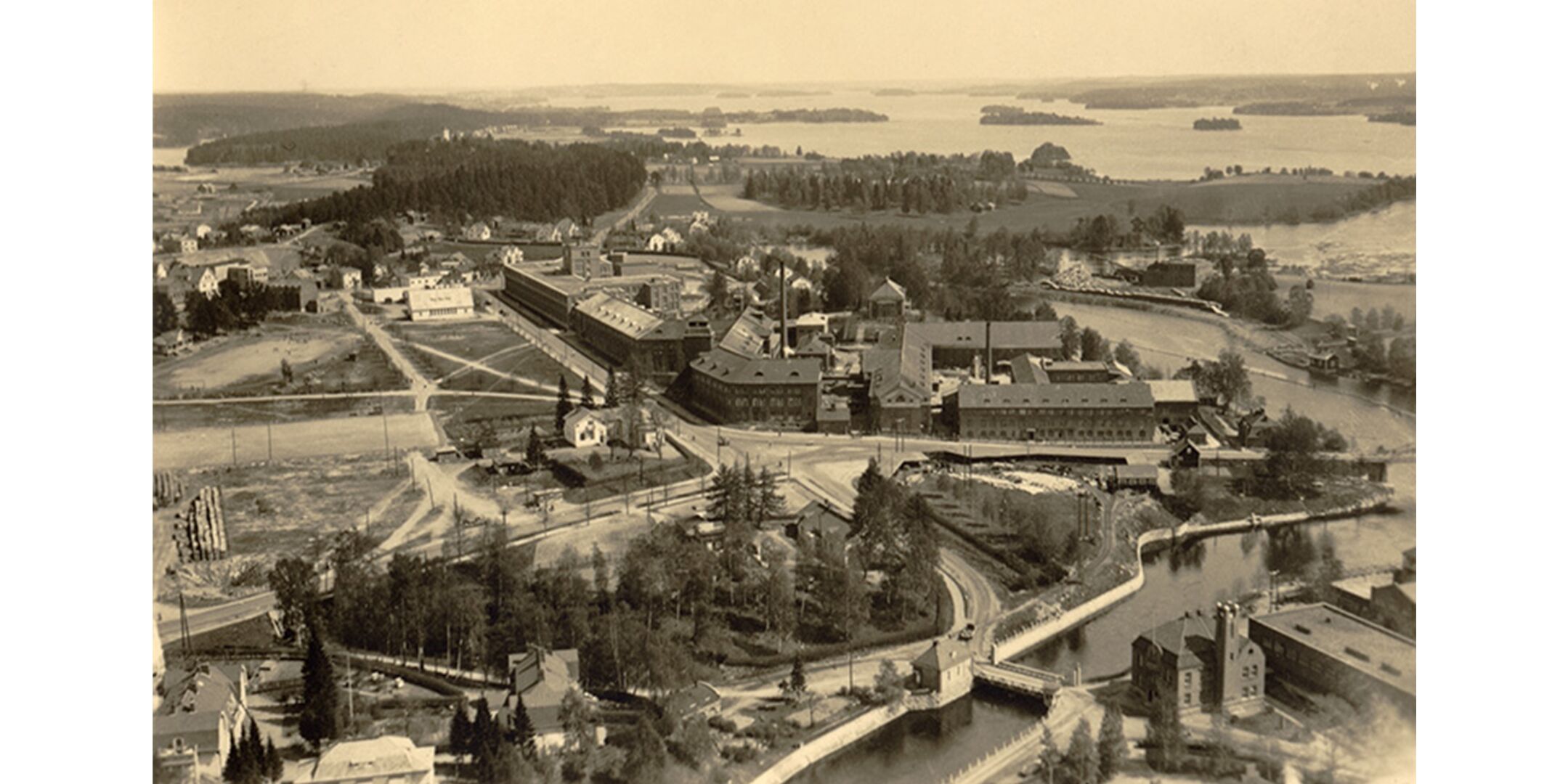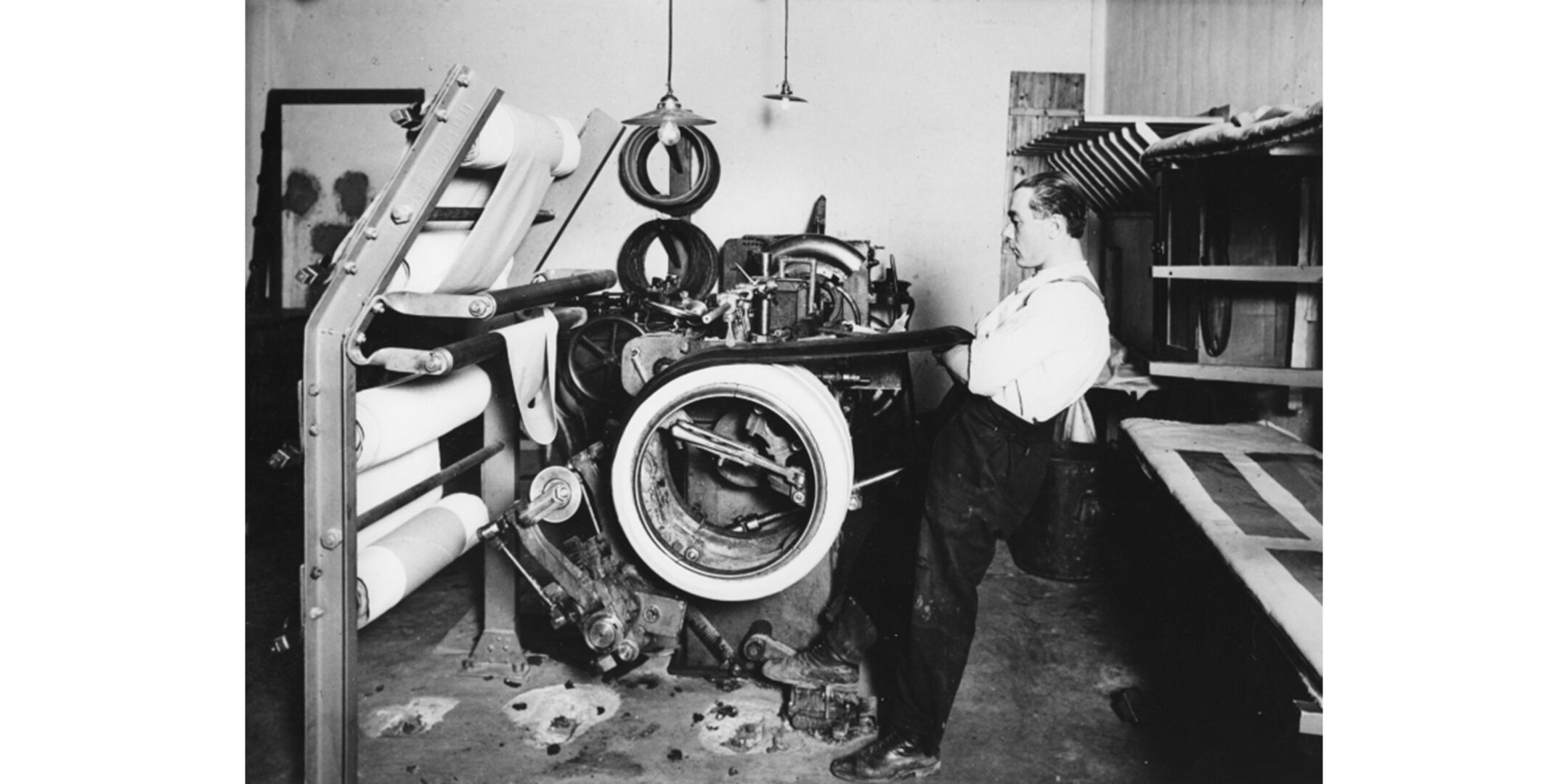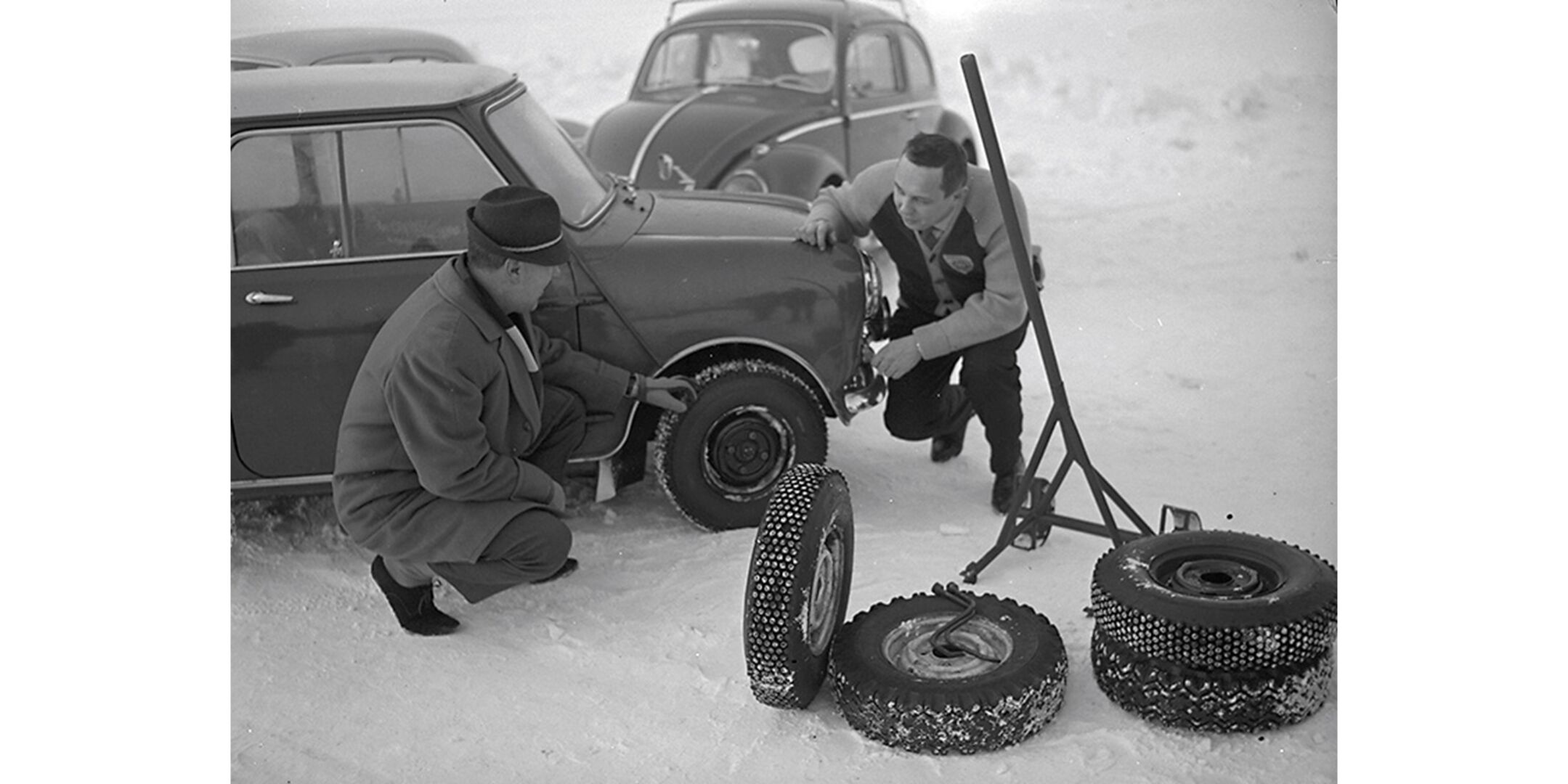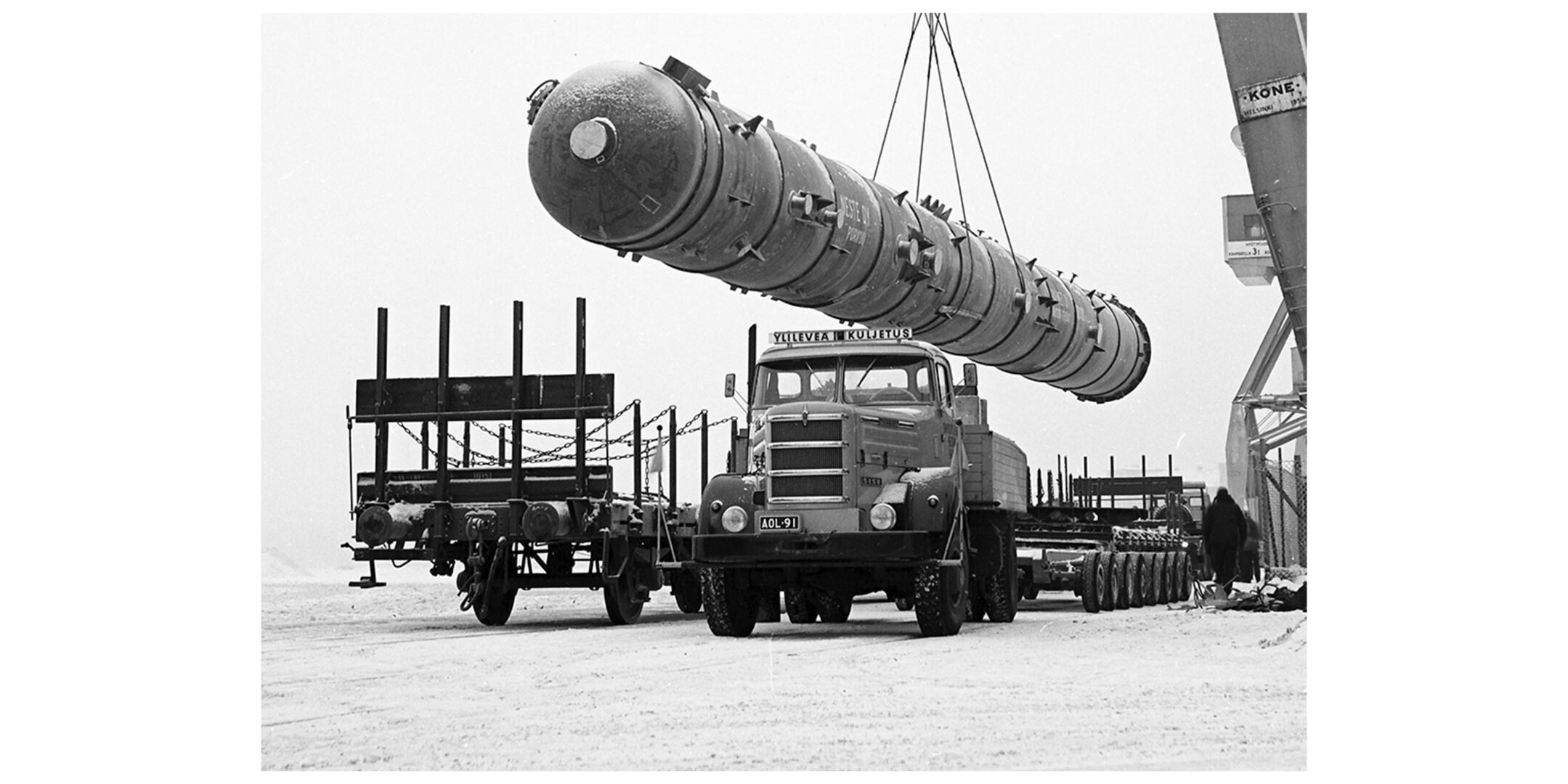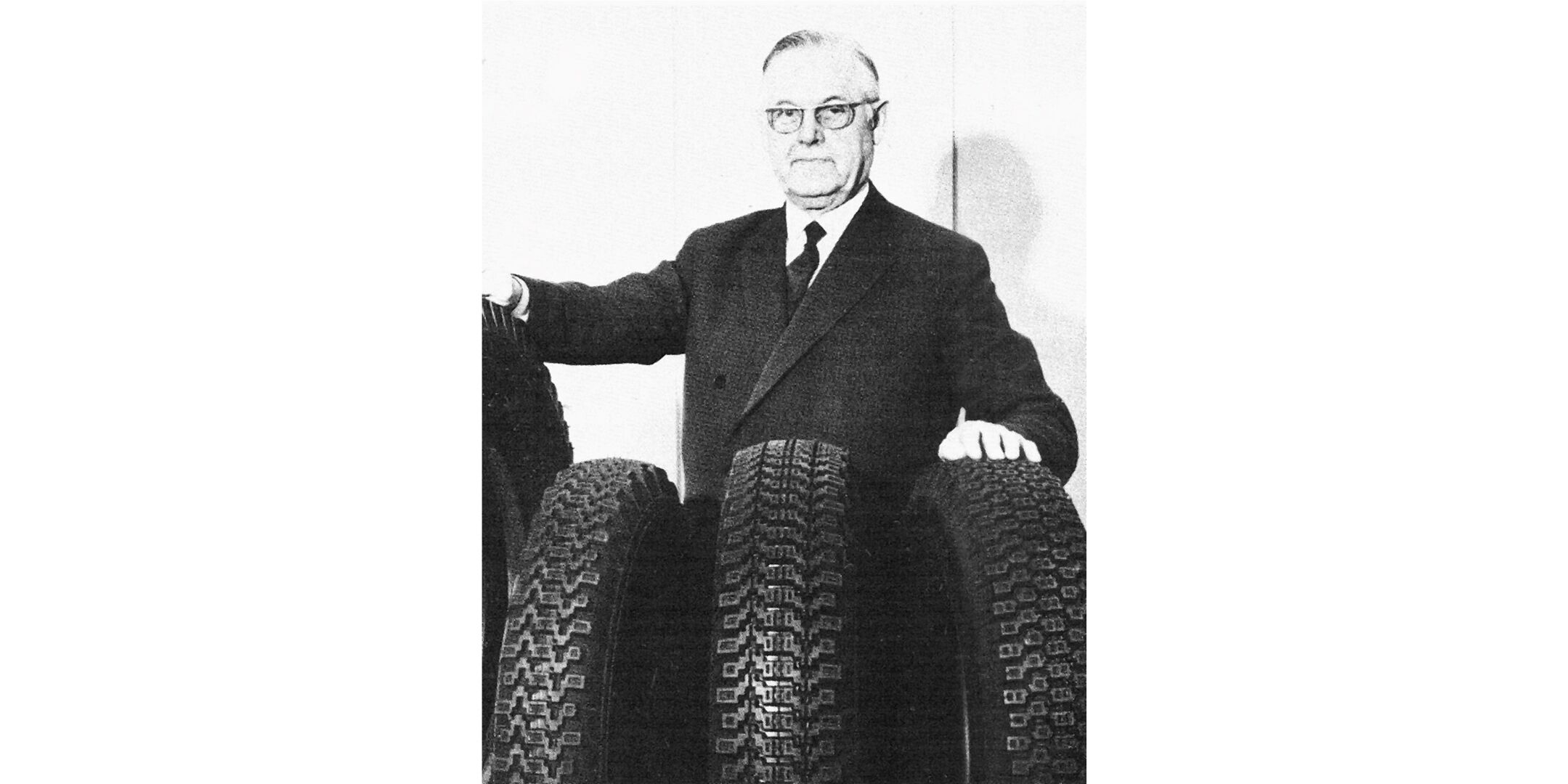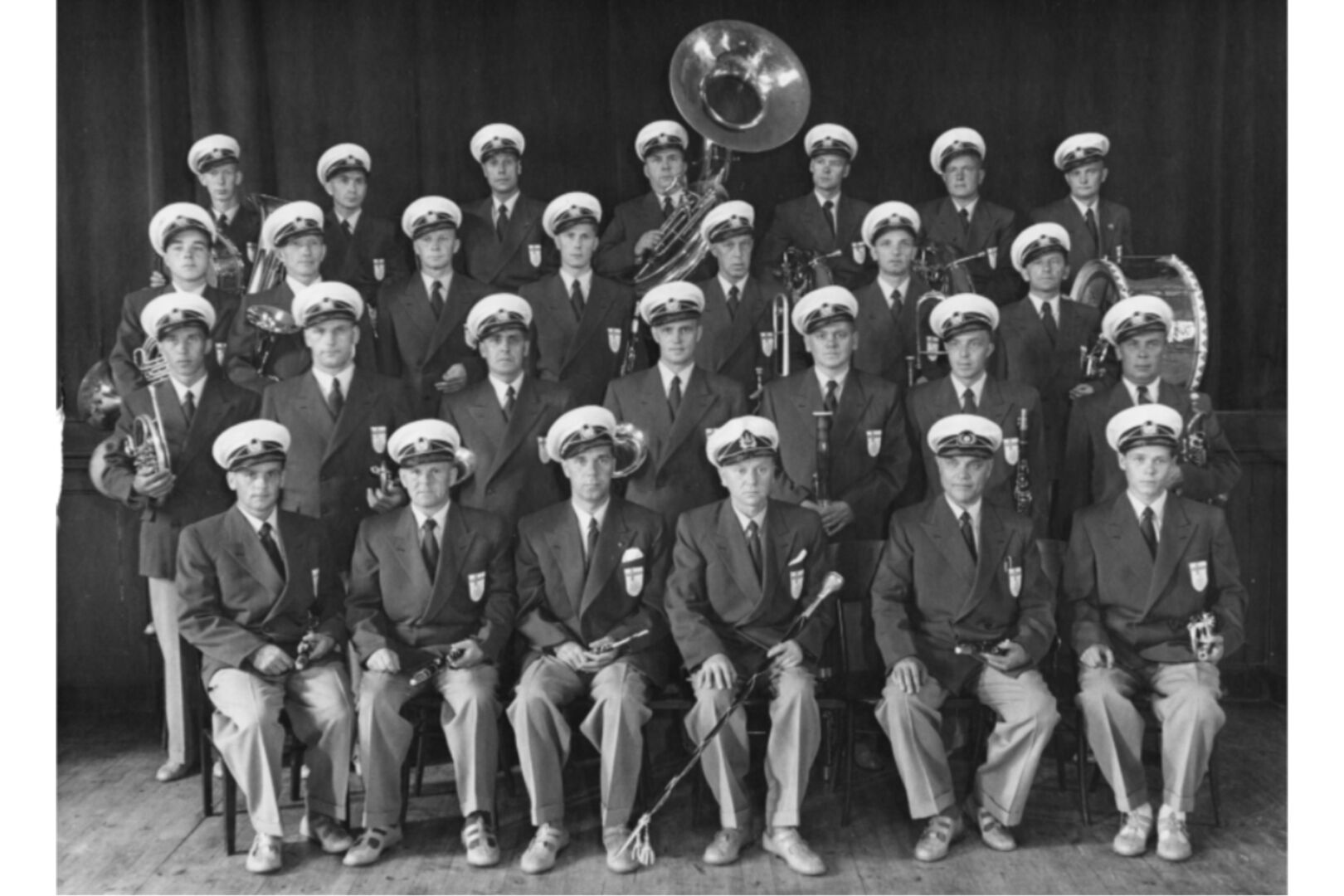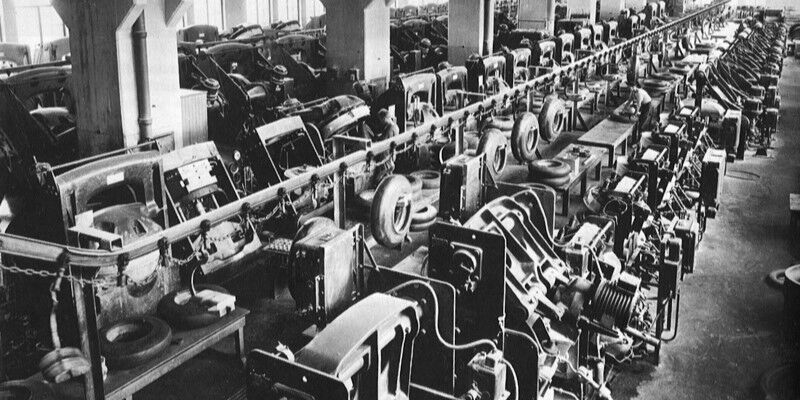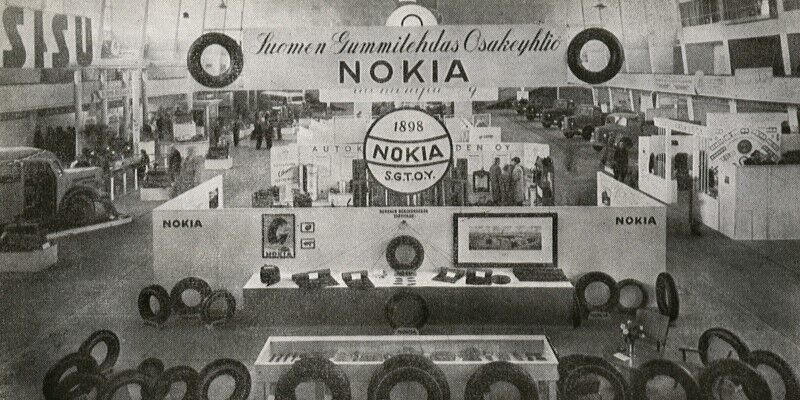Article
1930: Hakkapeliitta is born
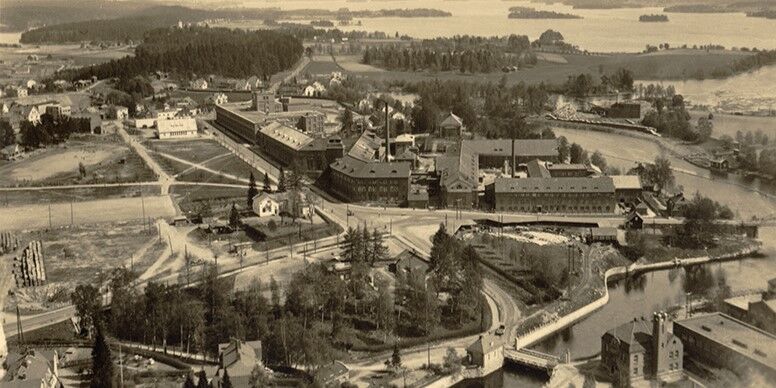
Despite the uncertain times and material shortages, Suomen Gummitehdas Osakeyhtiö started manufacturing car tires. Expertise and machines were acquired from the United States during negotiation trips made by Senior Engineer Ensio Salmenkallio. At first, a manufacturing batch was only a few dozen kilos, but by 1934, the factory was working three shifts. The first tire made for the home market was known as the “Kesäpinta” (Summer tread) and it was introduced in 1932.
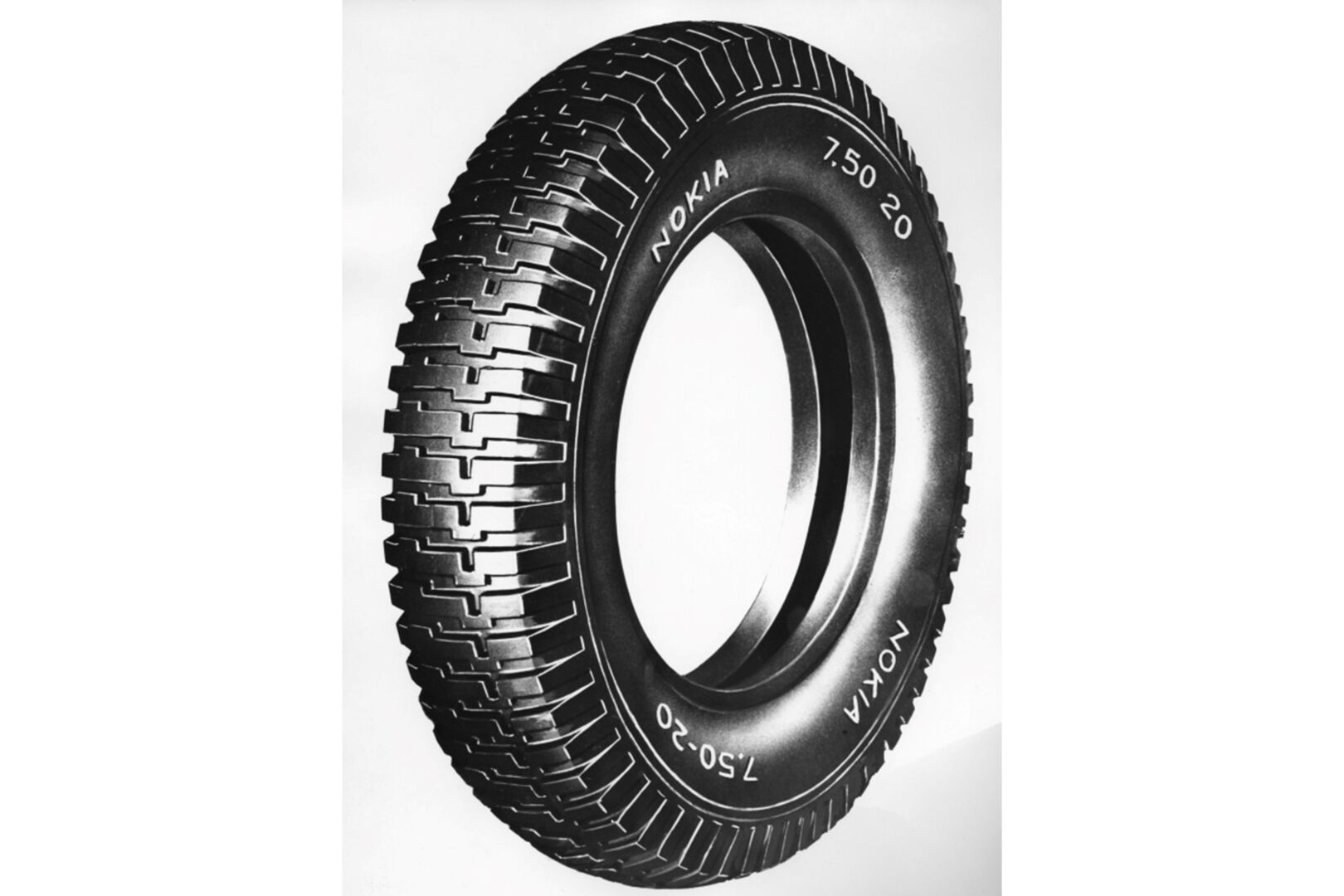
Car tires from Finland
The brave decision to start manufacturing car tires was made when it seemed that manufacturing in Finland would be more profitable than importing. Tire manufacturing within Finland was also desirable from a defence point of view. “The time might be suitable for the company to take up the manufacturing of such,” said the Board of Directors of Suomen Gummitehdas in September 1931.
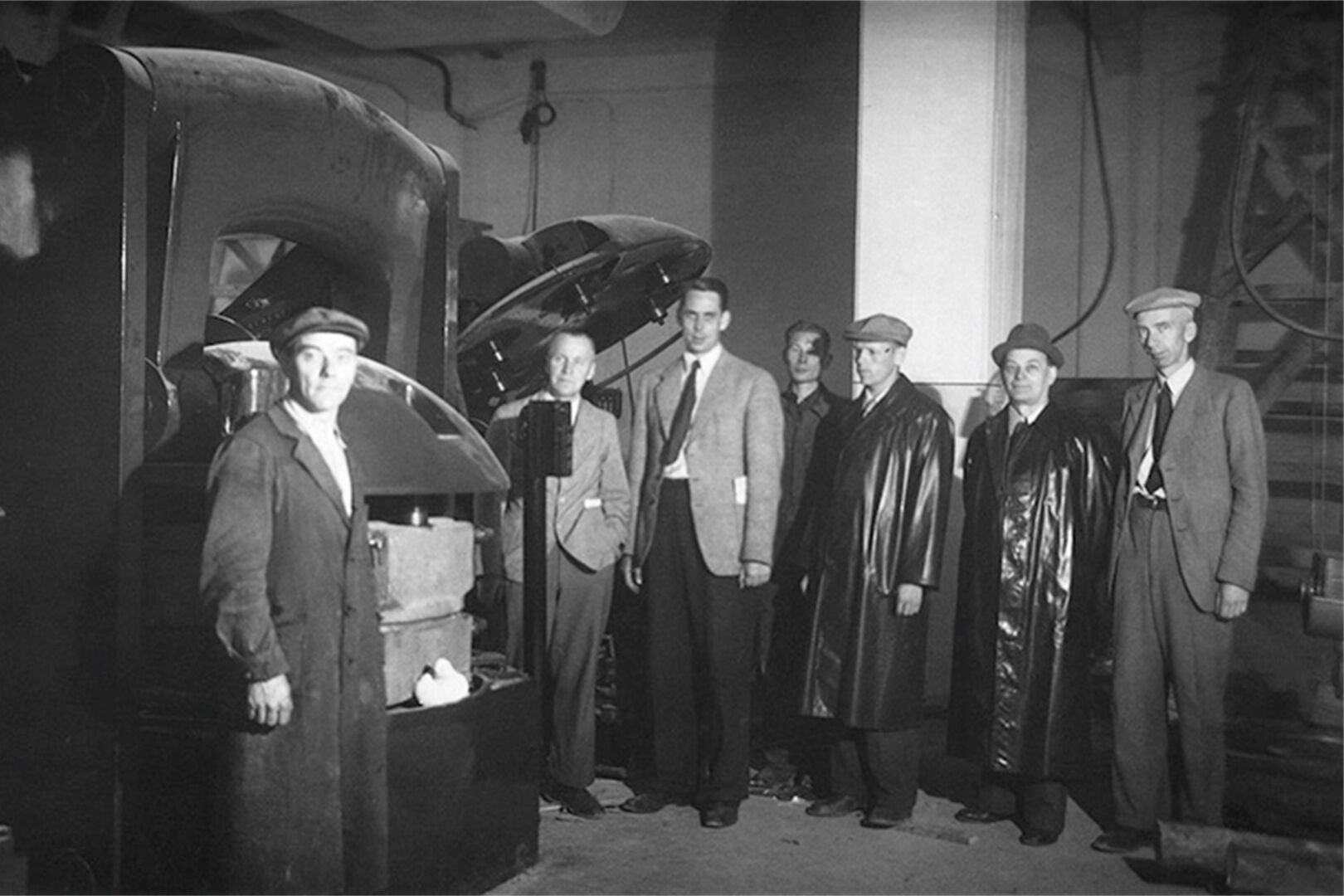
Ensio Salmenkallio
When winter tire production started, Ensio Salmenkallio (1900–1985) was the manager of the car tire department at Suomen Gummitehdas. He played a key role in developing Finnish tire manufacturing.
The pioneer for winter tires was the Kelirengas, introduced for trucks in 1934. In 1936, three moulds were ordered for producing snow tires for cars. These machines produced the first winter tires for passenger cars: the new Hakkapeliittas, also referred to as Snow Hakkapeliittas. The winter tires had a special, safe tread pattern that helped even winter-shy motorists get on the road.
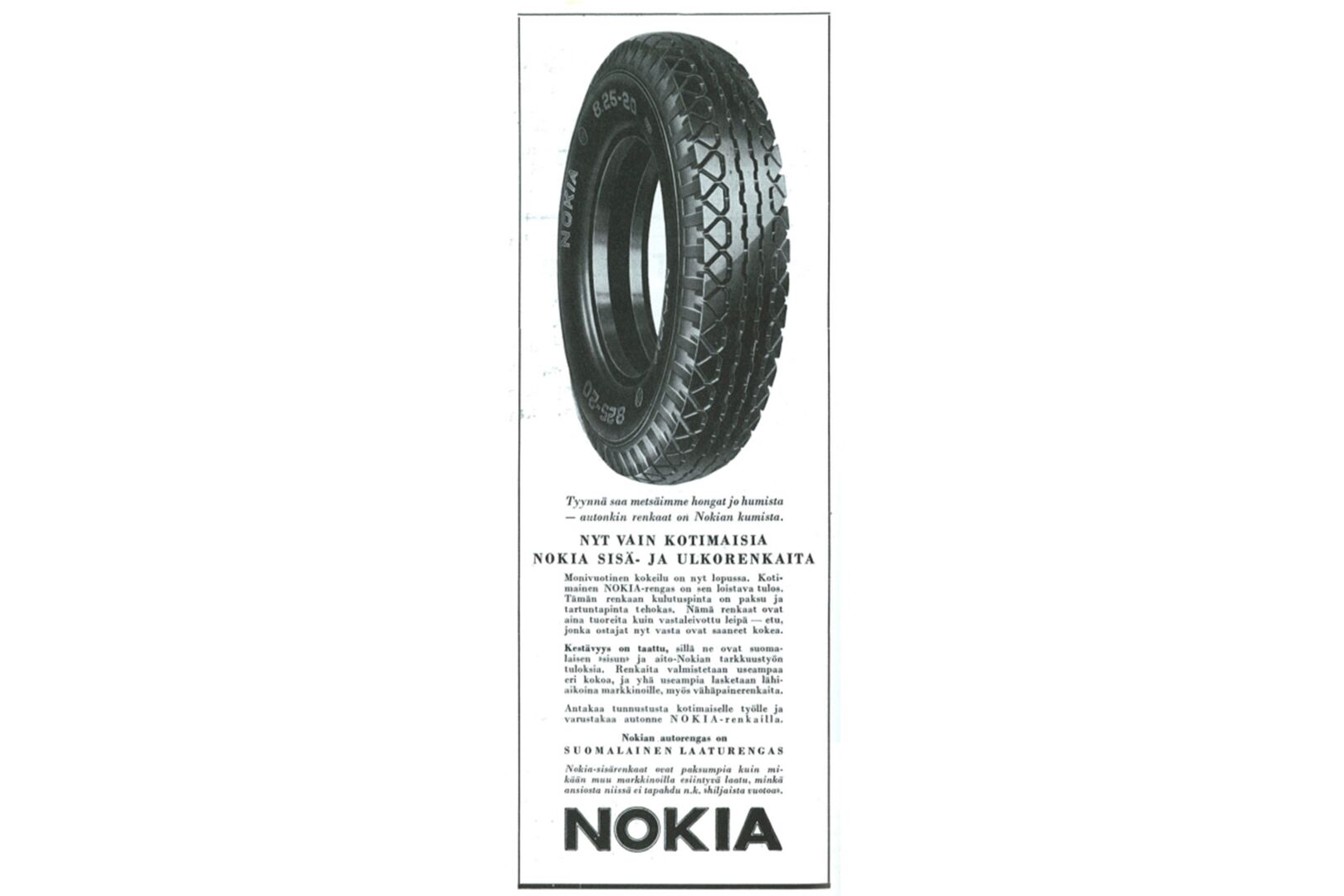
Kesäpinta
The first tire model by Suomen Gummitehdas Oy was known as the Kesäpinta (Summer tread). A test tire in the size 4.5 x 21 was completed in July 1932, and the new tire became generally available to drivers in April 1933. The passenger car tire was designed for summer roads; it had a fairly wide tread and a recognisable grid pattern. Its inner tube was thicker than that of the competition, which provided puncture protection.
Image: Advertisement for summer tires from 1936.
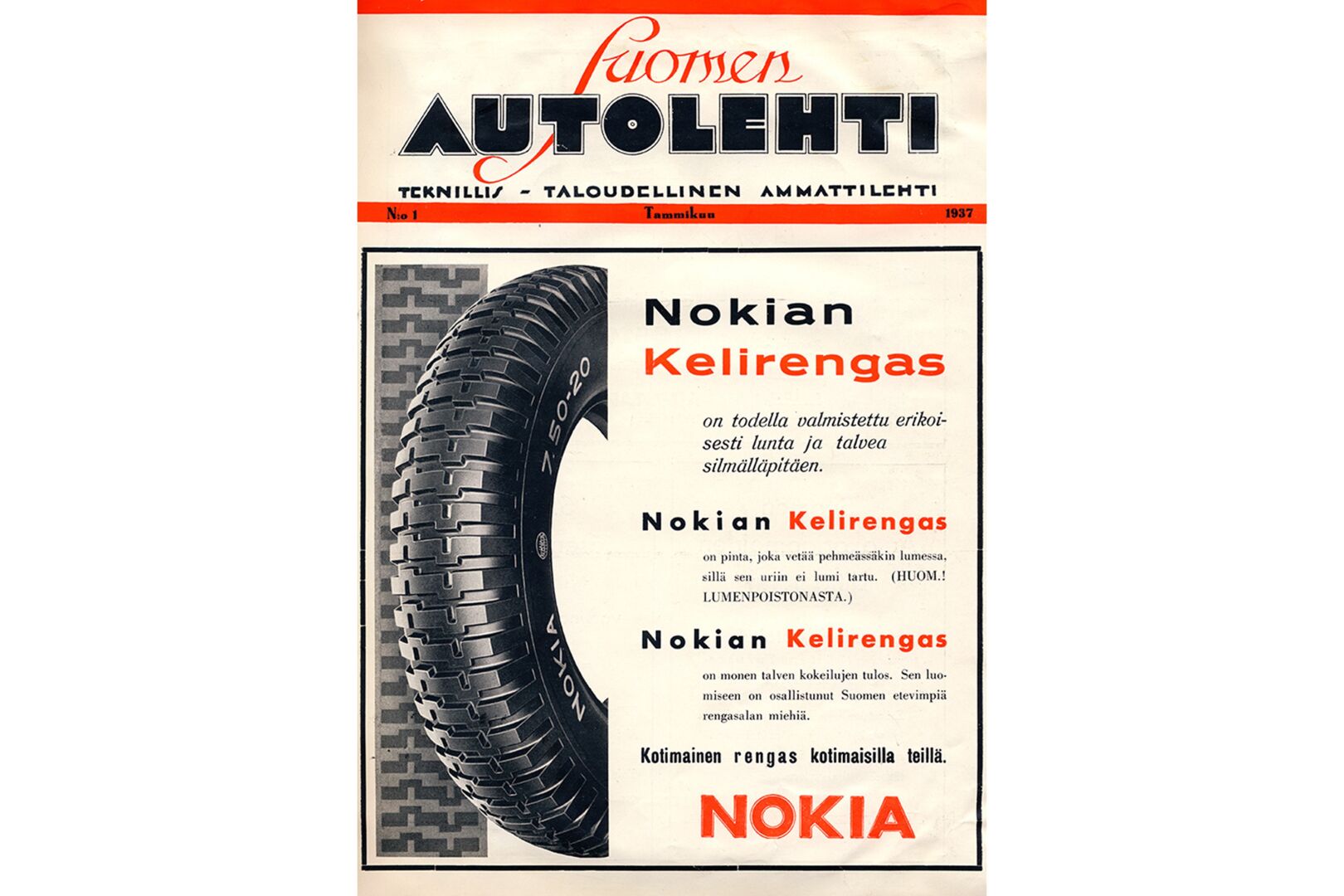
Kelirengas
The world's first winter tire was the Kelirengas, the predecessor to the Hakkapeliitta. It was developed to be used on trucks in the Northern conditions and poorly ploughed winter roads of the 1930s. The grooved tread pattern of the tire worked on snowy roads, making snow chains obsolete. The strong but spacious transverse grooves cleaned off snow while driving, which ensured excellent grip. The winter tire tread pattern that was introduced with the Kelirengas remained similar in the Hakkapeliittas all the way to the 1950s.
New machines were constantly acquired, including the tire stretcher “Big Bertha”, a Canadian “midwife machine” for pad removal and a Finnish curing press made by Lokomo. The price list for 1934 had ten tire models. On the eve of the Winter War at the end of the 1930s, approximately 110 tires a day were being produced.
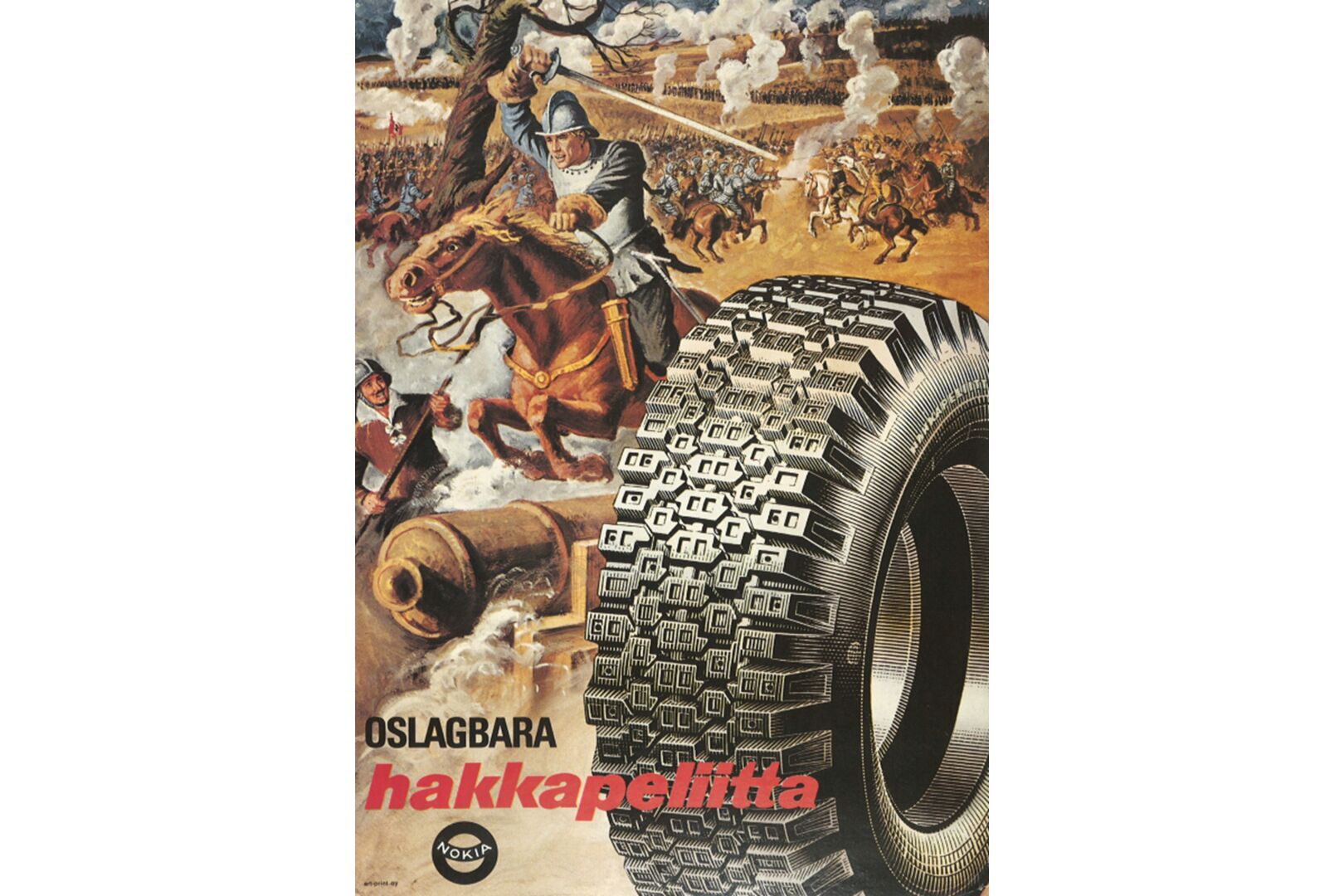
The Hackapelites
The Hakkapeliitta tire was named after the brave warriors of the 17th century. The Hackapelites (Finnish: Hakkapeliitta) were Finnish cavalry who served in the Swedish Army during the Thirty Years' War. Their legend was born from the attack command: “Hakkaa päälle!” (English: “Cut them down!”).
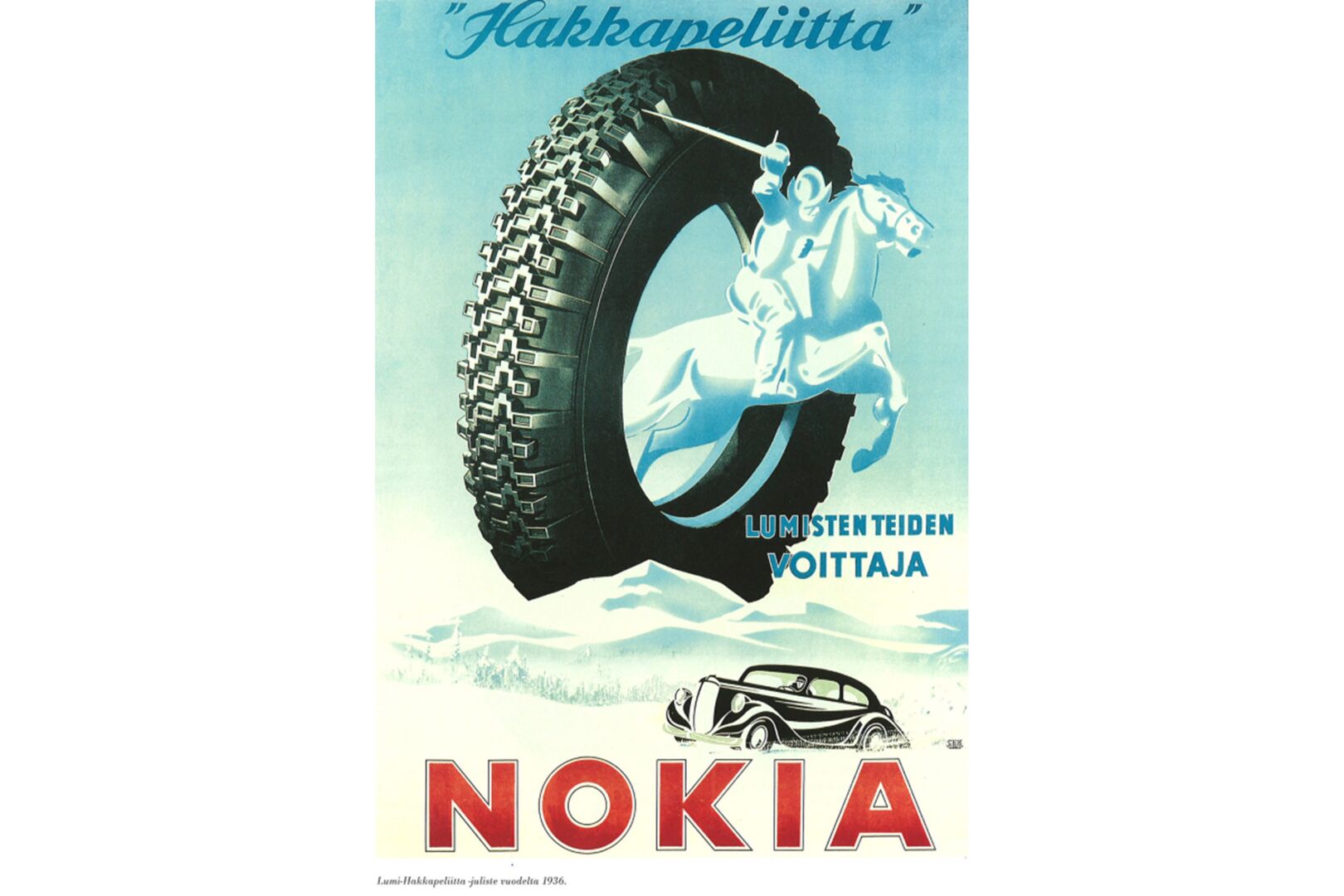
Snow Hakkapeliitta
Snow Hakkapeliitta poster from 1936.
The tires were tested by local bus companies and taxis. Experience from professional drivers is still worth gold in tire development. Even the company band toured Finland, gathering information concerning the customers’ wishes at the same time.

Buses
The 1930s were the golden age of buses and coaches in Finland. Long-distance coach operators quickly adopted winter tires and the drivers would report their operating experience directly to Gummitehdas.
Image: Bus station in 1938. Picture archive of the Vapriikki museum centre.

Taxis
The taxi drivers in the Tampere region were the testers for the first passenger car winter tire models. Taxis and Nokian Tyres continue to cooperate in the fields of new product launches and durability testing, for example.
Image: Never leave home without a Kelirengas. A taxi driver in Vyborg checking the spare tire on his car in the 1930s.
